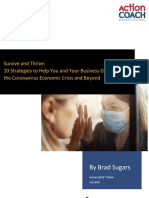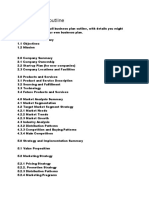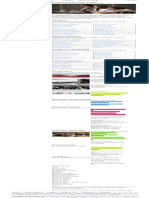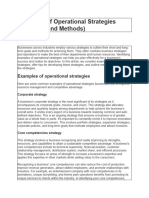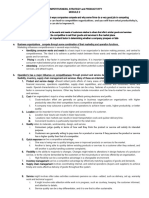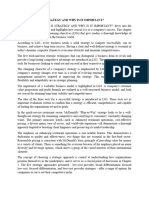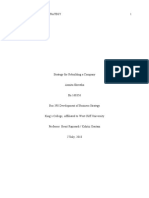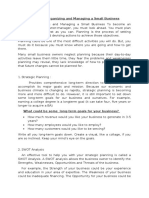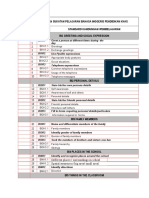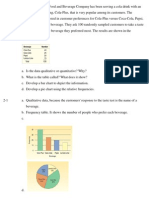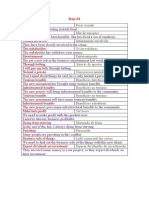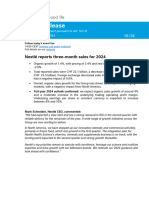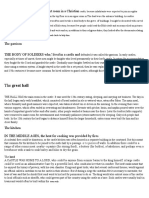To: Mr.
Le Manh Duc, Tutorial of Introduction to management
From: Group 7
Nghiem Dam Khanh Van 4TC20
Nguyen Thi Bich Van 4D20
Le Cong Tran Long
Duong Khanh Thuy Linh
Subject: Introduction to management
Date: 27th September, 2021
FOUNDATIONS OF PLANNING
APPLICATION 2
“Off-season, Peak-season, No season”
Purpose:
This report's mission is to depict some of the plans that businesses have applied to their business
strategies to maintain operations at different times of the year as well as in the context of the COVID-
19 pandemic. Bearing this in mind, this report elucidates three main questions. Firstly, what types of
plan do companies need to survive the off-season? Secondly, is that different from peak-season?
Finally, what types of plan do organizations need to adapt to the new normal?
Discussion Sections:
1. What types of plan do companies need to survive the off-season?
Off-season is a time of year when business, manufacturing activity, etc., is less than normal or at
an unusually low point. In order to survive the off-season, businesses need to use the following
types of plans: Strategic plan, Directional plan and Standing plan. Based on these types of plans,
we propose five specific steps to maintain the business even during the lean months.
First of all, keeping off-season costs down. In addition to cash management is managing costs.
During the slow season, reduce expenses as much as possible. In fact, employ workers on a
seasonal rather than permanent basis to minimize hiring costs.
Secondly, staying in touch year-round. Develop a mailing list of your high-season customers
and create a monthly email newsletter. Keep the company's name in front of them so they
remember you when they’re ready to buy. For example, if yours is a summer business in a tourist
area, mail a "Welcome Back" coupon or service offer to past customers as well as potential
customers.
Thirdly, developing a variety of product lines. Diversify offerings to transform a company into
a year-round business. For instance, many businesses that operate a homestays model are often
combined with a coffee shop or a restaurant business together - for not only tourists but also locals.
Fourthly, targeting new geographic markets. If seasonal business is weather-related, use the
off-season to reach new markets with different weather. For example, if you sell tours in Sapa, you
can overcome the slow season by expanding to Phu Quoc in winter to escape the cold.
Finally, staying active on social media. In today’s information age, potential customers have
access to almost anything on the internet, and that includes reviews of business. Social media
platforms like Instagram, Facebook are great for posting reviews, images of customers enjoying
�your product or service, or any promotions throughout the off-season.
A particular case of successful application of above plans is the Big Bottom Market. According
to John Grossman, author of a New York Times article titled "A Seasonal Business Aims to Survive
the Off-Season," he reported how one high-end restaurant has retooled its marketing to keep sales
strong year-round. Grossman described the market's challenge at the time, which was during the
hardest months of the year, from October to April, when the number of visitors was not much
because it was not the peak season, the store's sales on May 11 plummeted to as low as $4,000. By
using available resources such as food, location, timing, Big Bottom Market has created six great
strategies: First, revamped its summer wine inventory to include more lower-priced wines that
would appeal to local residents. After that, it marketed directly to local residents in local media.
Besides wine and drinks, the restaurant also launched a catering business and opened for dinner.
Moreover, the new idea was to have a food truck that went directly to consumers. Finally, by
starting to sell more biscuits and ready-to-bake biscuit dough through food wholesalers. Now the
company has plans to expand its distribution throughout the U.S.
2. Is that different from peak-season?
“Peak-season” or “high season” is known as a time of the year during which demand is highest
and a rewarding time for business owners. While the low season plan is how to help the
company survive until the high season, the high season plan is about attracting as many
customers and making as much profit as possible. In this profit season, businesses should also
use Strategic plan and Standing plan. Furthermore, to gain the best use of this time, here are
some suggestions for what businesses need to do.
First, recruiting more staff. During the peak season, the workload will increase significantly
due to the increased number of customers. Without enough staff, the company can hardly
guarantee the quality of service. Therefore, it is necessary to find more employees.
Second, repairing, expanding and upgrading facilities. For example, open a few more hotels
to form a chain or simply build some new rooms to be able to serve more customers. Take
advantage of the off-peak times to carry out these works so that these expansions can be ready to
go into operation during the hotel's high season.
Finally, product promotion by coming up with new designs and social media. The company
can market its products in many different advertising channels such as Facebook ads, Instagram
ads, personal websites and blogs with high views. Reach customers by posting tour products and
services, product images with attractive promotions.
3. Lockdowns and other COVID-19 containment measures hit businesses so fast that many
couldn't withstand the shock. What types of plan do organizations need to adapt to the new
normal?
To be able to quickly adapt and return to the new normal, businesses need to use Strategic planning
with Long-term thinking. With our research on the practicality of the current situation, firms can
refer to some important tactics should be implemented as workplace readies full workforce back
to the office:
To begin with implementing a safe working environment. Implement measures that can
maximize social distancing protocols and be sure to install hand sanitizer stations and dividers.
Besides, ask your staff to wear face masks indoors when keeping distances is not possible.
Secondly, exploring different digital technologies. By using a variety of digital platforms, the
company can reduce the risk of viral transmission and can ensure the return to work unravels
� smoothly. For instance, substitute face-to-face meetings with online video conferences, like Zoom
or Google Meet. Video conferences offer businesses the chance to communicate with customers
without the risk of exposure to the virus.
Last but not least, re-evaluating business models for growth. Managers can brainstorm new
ideas to increase the audience and engagement. Businesses can increase or diversify the services
and products that it offers. As an example in response to the coronavirus crisis, 71% of business
firms in England have changed their business models. The most common changes they brought to
their business strategy are- selling more products online, online customer service, and additional
delivery services.
Case study: MYBARRIO Online. Founded in Barcelona in 2016, MYBARRIO is one of Spain’s
largest creative communities. They select the works of artists, designers and creators to sell via
their online shop and hold an annual pop-up market to sell these products. To ensure the company’s
survival over the pandemic and support the creators involved, the founder decided to move the
market online. The project called MYBARRIO Online allowed visitors free access to an
interactive, online design festival. Guests were also able to purchase products online. This decision
has ensured the survival of the company and paved the way for future online markets.
Conclusion:
In a nutshell, to successfully manage and operate a business, it is necessary to develop business
plans suitable for different periods of market volatility. In addition, business owners need to adopt
long-term change plans and initiate concrete steps to make their businesses survive in the new
normal.
� References
Grossman, J. (2012, July 11). A Seasonal Business Aims to Survive the Off-Season. Retrieved from
nytimes.com: http://www.nytimes.com/2012/07/12/business/smallbusiness/a-seasonal-
business-aims-to-survive-the-off-
season.html?_r=2&adxnnl=1&ref=casestudies&adxnnlx=1363003444-
I2e8xkfVySkJzjv6twNkIQ&
Adapting to a New Normal. (2020, August 17). Retrieved from nbs.net:
https://www.nbs.net/articles/adapting-to-a-new-normal
FDI Researched. (2021, July 30). STRATEGIES BUSINESSES CAN IMPLEMENT TO ADAPT TO
THE NEW NORMAL. Retrieved from researchfdi.com: https://researchfdi.com/new-normal-
business-economy-strategy-trends-covid-19/
5 Business Strategies for Surviving the Pandemic. (n.d.). Retrieved from eseibusinessschool.com:
https://www.eseibusinessschool.com/5-business-strategies-for-surviving-the-
pandemic/?fbclid=IwAR2yVTkUSv5sZfxZQiPofsP_1f98gemY-
0oaF_5mUwf9Wva11gJ2adlWBDc







